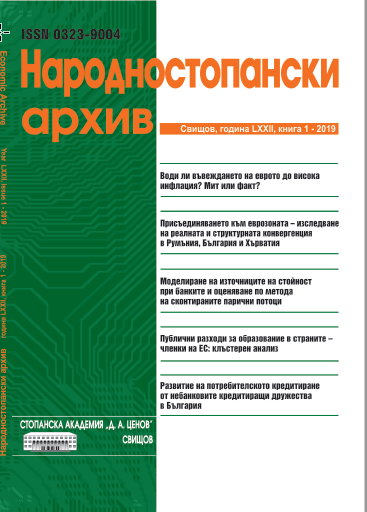ВОДИ ЛИ ВЪВЕЖДАНЕТО НА ЕВРОТО ДО ВИСОКА ИНФЛАЦИЯ? МИТ ИЛИ ФАКТ?
DOES THE INTRODUCTION OF THE EURO LEAD TO HIGH INFLATION? MYTH OR FACT?
Author(s): Yanko HristozovSubject(s): Economy, Business Economy / Management
Published by: Стопанска академия »Д. А. Ценов«
Keywords: euro; eurozone; inflation
Summary/Abstract: The replacement of the local currency with the Euro has led to a number of discussions, commentaries and arguments, most of which refer to issues related to an increase of the common levels of the prices of goods and services. The subject of the research comprises the countries which adopted the common European currency after the year 2007. Cyprus and Malta are not discussed due to pages limit. The purpose of the article is to discuss the facts related to the myths about high inflation after the adoption of the Euro and to ascertain whether this myth is significant or whether it can be refuted. In order to accomplish this, we must first study the experience of the newly joined Member States when the common currency was introduced; then we analyze the inflation rates and the changes in the years following their admission to the eurozone. The thesis that is to be proven or rejected is that the adoption of the Euro does not have significant impact on the prices of goods and services in the country that adopts the new currency, whereas if inflation processes are observed, their rates coincide with those of the preceding years.
Journal: Народностопански архив
- Issue Year: 2019
- Issue No: 1
- Page Range: 3-21
- Page Count: 19
- Language: Bulgarian

